![]()
![]()
![]()
Use LEFT and RIGHT arrow keys to navigate between flashcards;
Use UP and DOWN arrow keys to flip the card;
H to show hint;
A reads text to speech;
39 Cards in this Set
- Front
- Back
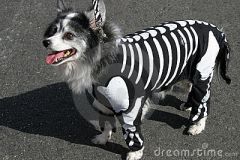
What are the five functions of bones? |
1. Support 2. Leverage 3. Storage 4. Protection 5. Blood cell formation |
|
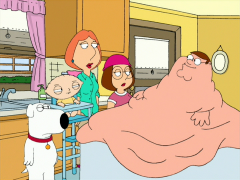
What are the five types of bones? |
1. Long 2. Short 3. Flat 4. Irregular 5. Other |
|
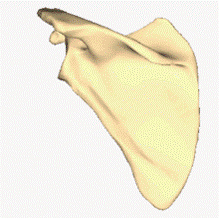
What type (out of the five) of bone is this? |
Flat bone |
|
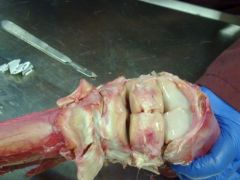
What type (out of the five) of bone is this? |
Short bone |
|
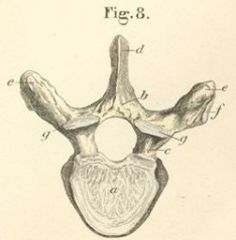
What type (out of the five) of bone is this? |
Irregular bone |
|
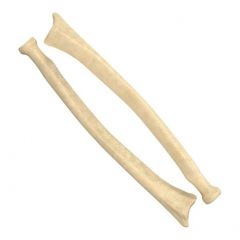
What type (out of the five) of bone is this? |
Long bone |
|
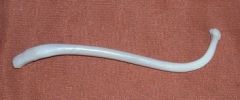
What type (out of the five) of bone is this? |
Other type bone |
|
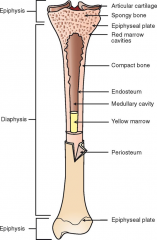
What type of bone is this? |
Long bone |
|

What cavity within the bone houses bone marrow? |
The medullary cavity |
|

What do you call the heavy, dense, and strong component of the bone that makes up the outside layer of all bones? |
Compact bone |
|
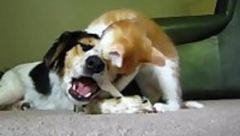
What component of the bone is spongy, consisting of tiny spicules in seemingly random arrangements? |
Cancellous bone |
|
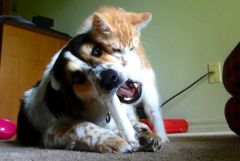
Where is the epiphysis located? |
On both the proximal and distal ends of a long bone |
|
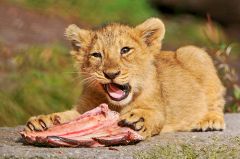
What is the diaphysis? |
The shaft of the long bone |
|
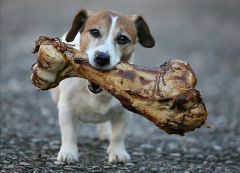
What important cells does the periosteum contain? |
Bone-forming cells |
|
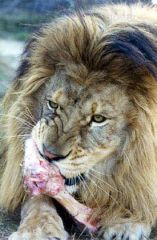
What is another name for the epiphyseal plates? |
Growth plates |
|

What are the significances of red marrow and yellow marrow? |
Red marrow forms red blood cells, whereas yellow marrow contains fat and produces connective tissue |
|
|
Define the following: A. Fossa B. Tubercle C. Tuberosity D. Foramen |
A. A depression or hollow in the bone B. A round nodule of bone C. Similar to a tubercle, but generally large and at the ends of a bone D. An opening in the bone |
|
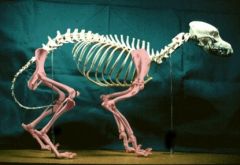
What are the two general groups of bones? (The white bones vs. the pink bones) |
Axial and appendicular |
|
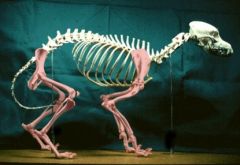
What bones are present in the axial skeleton? |
Vertebrae, mandible (and the rest of the skull), hyoid bone, ribs, sternum |
|
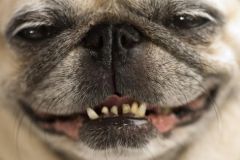
What kind of dog is this? (Hint: Not the breed..) |
Brachycephalic |
|
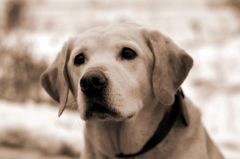
What kind of dog is this? (Hint: Still not the breed.) |
Mesaticephalic |
|

What kind of dog is this? (Hint: Again, not the breed.) |
Dolichocephalic |
|
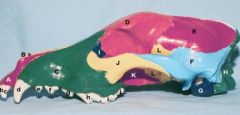
What type of bone is the skull mainly composed of? |
Flat bone |
|
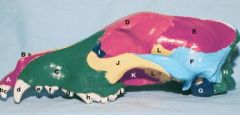
Where are the sinus located in the skull? |
The frontal bone and the maxilla |
|
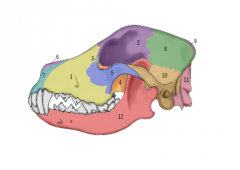
Identify 1, 3, and 6. |
1. Maxilla 3. Lacrimal bone 6. Nasal bone |
|

Where are the sphenoid, zygomatic, and incisive bones? |
4. Sphenoid bone 5. Zygomatic bone 7. Incisive bone |
|
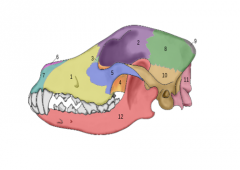
Identify 2, 9, and 11. |
2. Frontal bone 9. Interparietal bone 11. Occipital bone |
|
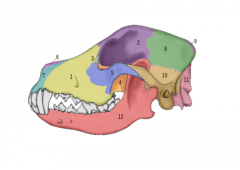
Where is the parietal bone, the temporal bone, and the mandible? |
8. Parietal bone 9. Mandible 10. Temporal bone |
|
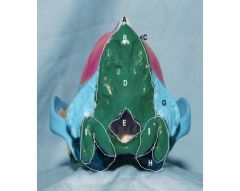
Where are the occipital condyles and the tympanic bullae? (Note: B and D are one.) |
I. Occipital condyles H. Tympanic bullae |
|
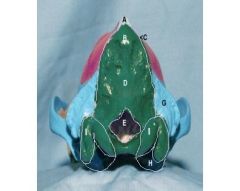
Identify B/D and E. |
B/D. Occipital bone E. Foramen magnum |
|

A. What is the name of this bone? B. Where is this bone located? |
A. The hyoid bone B. In the axial skeleton; it is located on the ventral aspect of the neck |
|
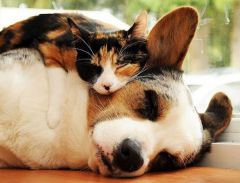
How many of each kind of vertebrae do dogs/cats possess? |
- 7 cervical vertebrae - 13 thoracic vertebrae - 7 lumbar vertebrae - 3 sacral vertebrae (fused) - 5-20 coccygeal vertebrae |
|
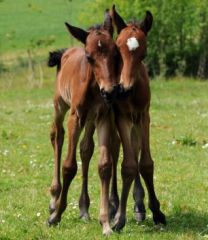
How many of each kind of vertebrae do horses possess? |
- 7 cervical vertebrae - 18 thoracic vertebrae - 5-6 lumbar vertebrae - 5 sacral vertebrae (fused) - 15-21 coccygeal vertebrae |
|
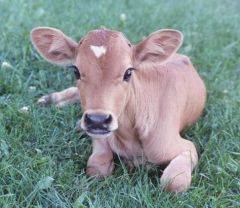
How many of each kind of vertebrae do cows possess? |
- 7 cervical vertebrae - 13 thoracic vertebrae - 5 lumbar vertebrae - 5 sacral vertebrae (fused) - 16-18 coccygeal vertebrae |
|
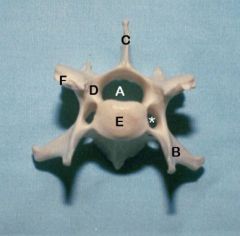
Identify A, B, C, and F. |
A. Vertebral foramen B. Transverse process C. Dorsal spinous process F. Articular process |
|
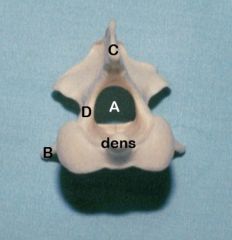
What are the two names for this bone? |
Axis and C2 (cervical vertebra 2) |
|
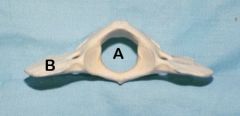
What are the two names for this bone? |
Atlas and C1 (cervical vertebra 1) |
|

What are the names of the two processes and the bones in between them? |
Xiphoid process (caudal), manubrium (cranial), and the sternebrae |
|
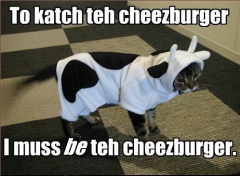
How many ribs and sternebrae do canines/felines, bovines, and equines possess? |
Canines/felines: 13 ribs, 8 sternebrae Bovines: 13 ribs, 7 sternebrae (fused) Equines: 18 ribs, 7 sternebrae (fused) |

